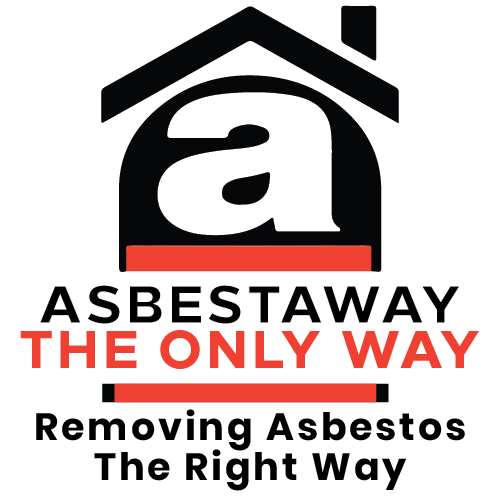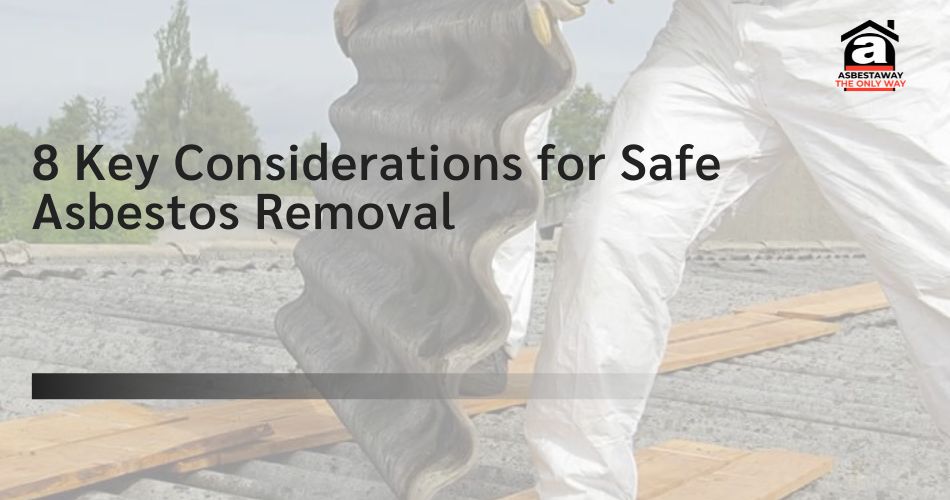Asbestos has now become health hazard that poses significant risks to human health. Safely removing asbestos is necessary to prevent from health risks. Its microscopic fibres can cause severe respiratory issues and even cancer if inhaled over time. Therefore, safe asbestos removal is not just a matter of compliance but of safeguarding health and wellbeing. In this blog, we explore the essential considerations for ensuring the safe removal of asbestos. By understanding the dangers posed by asbestos and following some key considerations for safe asbestos removal, we can protect both current and future generations from its health effects. Explore our below 8 key considerations for safe asbestos removal.
What Is Safe Asbestos Removal?
Safe asbestos removal is a carefully planned and systematic process that consists of removal of asbestos prioritising the protection of both workers and inhabitants from the dangers of asbestos exposure. It begins with a thorough identification and assessment of asbestos-containing materials (ACMs), ensuring that all potential sources are identified before any removal activities start. Considering regulatory guidelines is necessary throughout the process, guiding the use of specialized techniques and equipment aimed at minimizing the release of asbestos fibers into the air. This careful approach includes containment measures to prevent dispersion during handling, precise execution of removal procedures, and careful cleanup.
Considerations For Safe Asbestos Removal
In ensuring safe asbestos removal, it’s crucial to consider several key factors. Each step plays a vital role in safeguarding both workers and occupants from the hazards associated with asbestos exposure. Following are the 8 key considerations for safe asbestos removal:
-
Professional Assessment
Before any removal work begins, it’s essential to conduct assessment by qualified asbestos professionals. This assessment identifies the location and condition of ACMs and determines the appropriate removal strategies.
-
Detailed Risk Assessment
A detailed risk assessment evaluates the potential risks associated with asbestos removal, including the extent of contamination, exposure pathways, and potential health impacts on workers and occupants.
-
Regulatory Compliance
Compliance with local regulations and obtaining necessary permits is non-negotiable. It ensures that asbestos removal activities meet legal standards and safeguard public health and safety.
-
Proper Containment Measures
Containment is important to prevent the spread of asbestos fibres during removal. Physical barriers, negative air pressure systems, and sealing off HVAC systems are used to isolate the work area and minimize cross-contamination.
-
Personal Protective Equipment (PPE)
Workers must wear appropriate PPE, including respirators, disposable coveralls, and gloves, to protect against inhalation and direct contact with asbestos fibres.
-
Safe Removal Techniques
Safe methods such as wet removal techniques are employed to suppress dust and fibre release. This reduces the risk of airborne contamination and exposure during dismantling or demolition.
-
Proper Waste Disposal
Asbestos waste must be carefully packaged, labelled, and transported in accordance with waste management regulations. It should be disposed of at designated facilities equipped to handle hazardous materials.
-
Post-Removal Clearance
After removal, thorough air monitoring and visual inspections are conducted to ensure the area is free from asbestos contamination. Clearance certificates may be issued to verify compliance with safety standards.
Why Consider Asbestaway For Safe Asbestos Removal?
Asbestaway stands out as a leader in the field of asbestos management and removal in Australia. Here’s why you should trust us:
- Expertise: With over 40 years of combined experience, Asbestaway’s team comprises industry experts dedicated to safe and efficient asbestos removal practices.
- Safety First: We prioritize the safety and well-being of our clients and employees. Proper safety protocols and advanced removal techniques are integral to our operations.
- Regulatory Compliance: Asbestaway holds all necessary licenses and certifications, ensuring full compliance with national and local asbestos regulations.
- Client Satisfaction: Our commitment to excellence has earned us a reputation for reliability and quality service. We strive to exceed client expectations on every project.
Conclusion
Asbestos poses significant health risks, making safe removal procedures is important for protecting both workers and inhabitants. By adhering to professional assessments, detailed risk evaluations, regulatory standards, and employing proper containment, PPE, removal techniques, waste disposal, and post-removal clearance measures, we can effectively mitigate these dangers. Choosing a trusted partner like Asbestaway ensures best practices and regulatory compliance, backed by decades of experience and a commitment to safety. Let’s continue to prioritize safety and well-being in all asbestos removal efforts, safeguarding not only our present but also future generations from the hazards of asbestos exposure.

